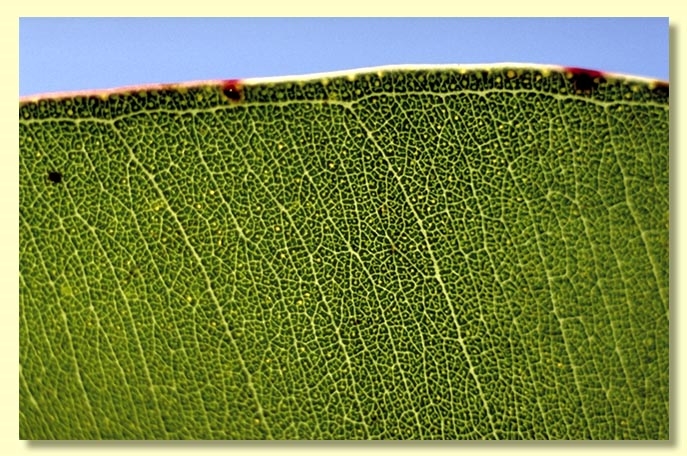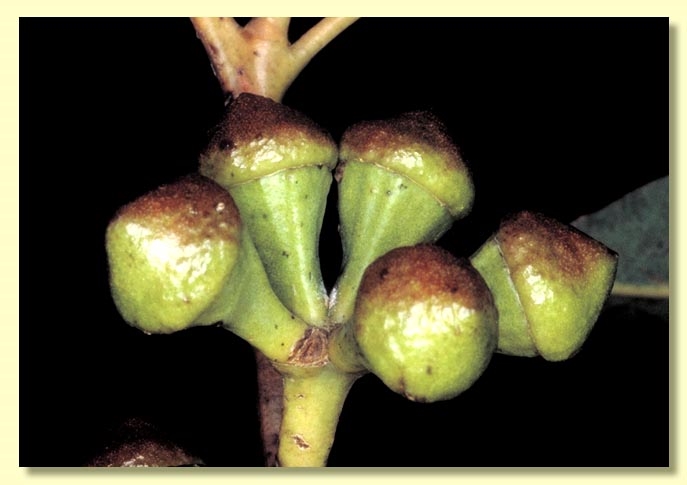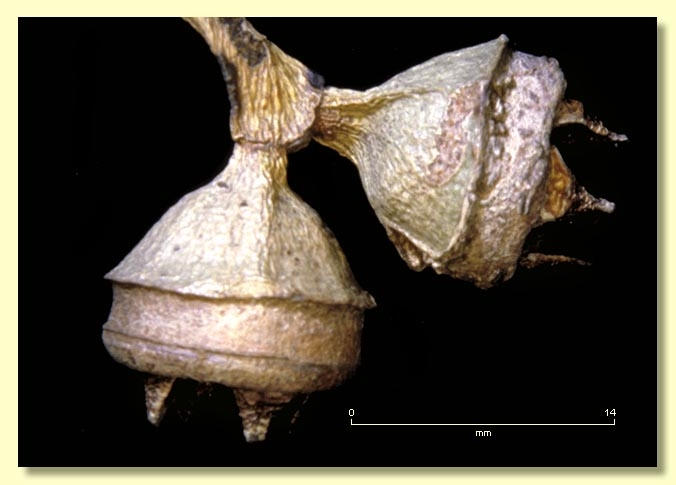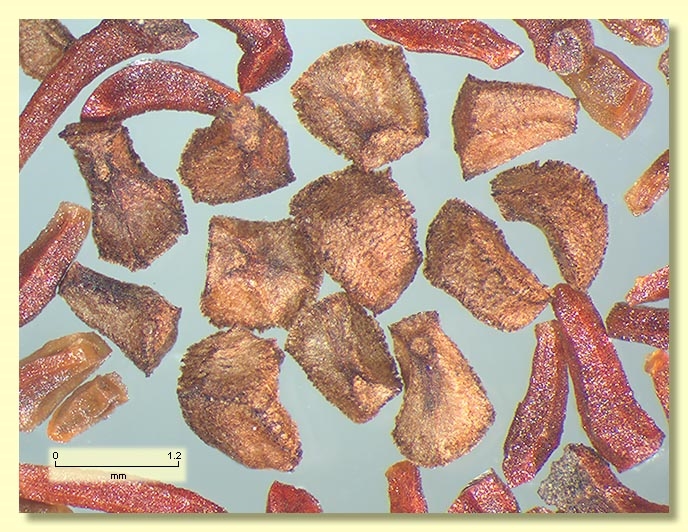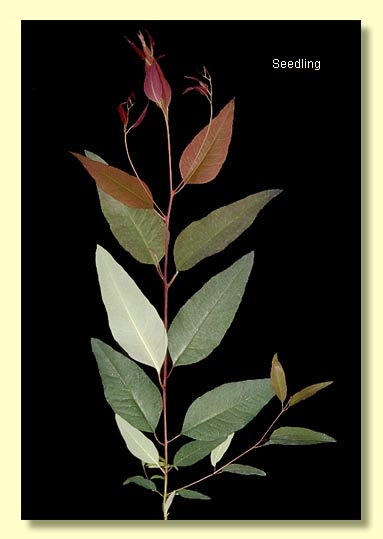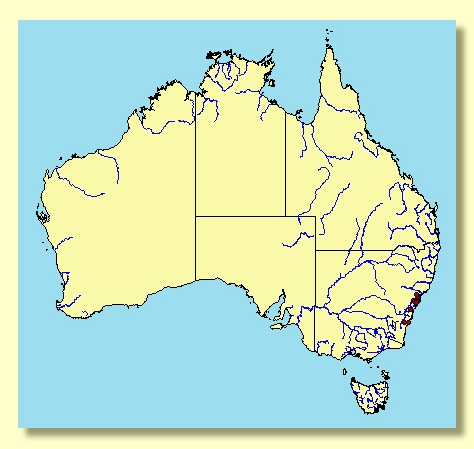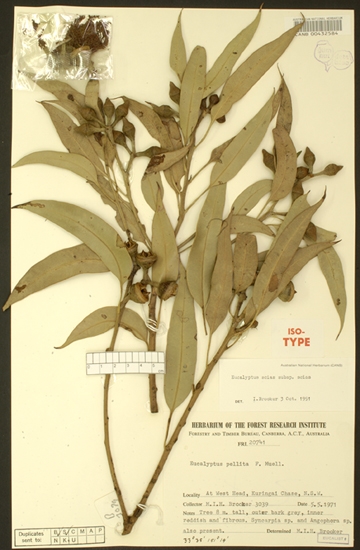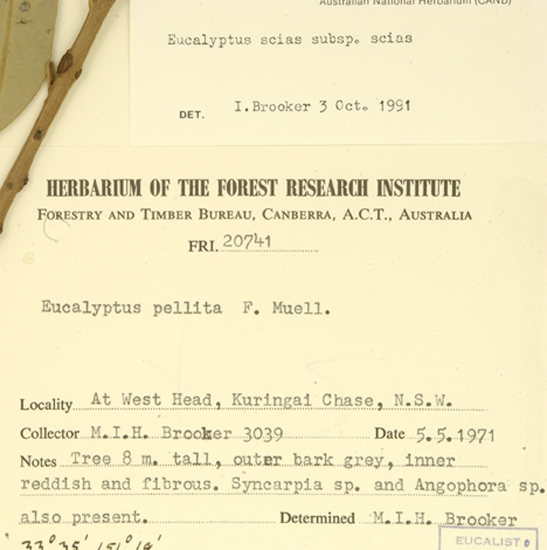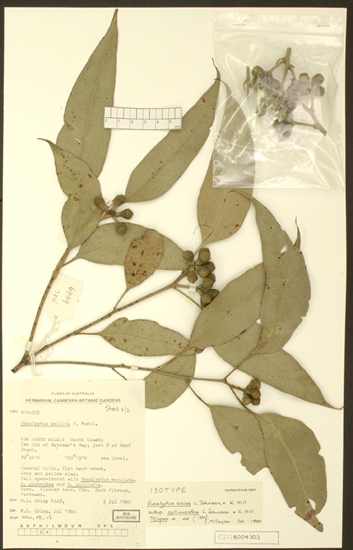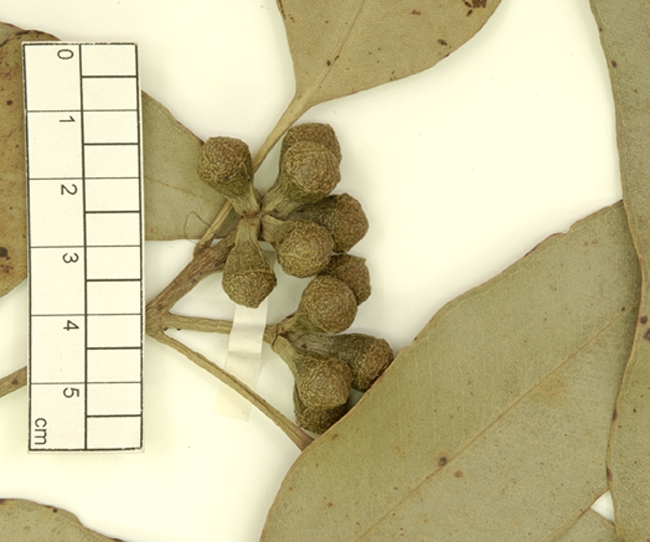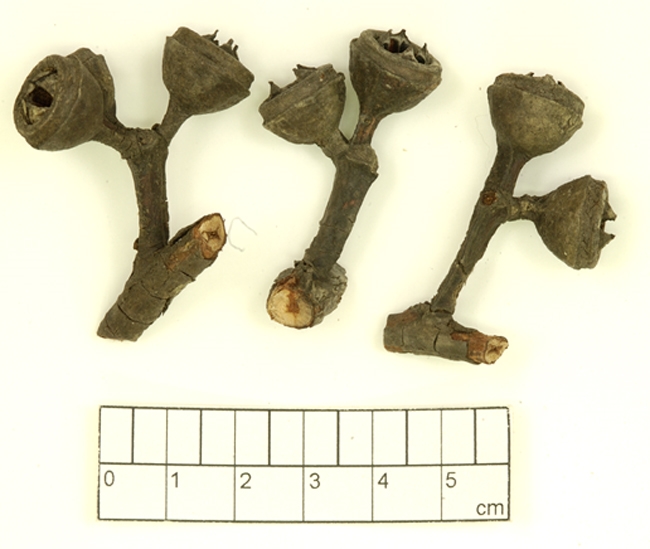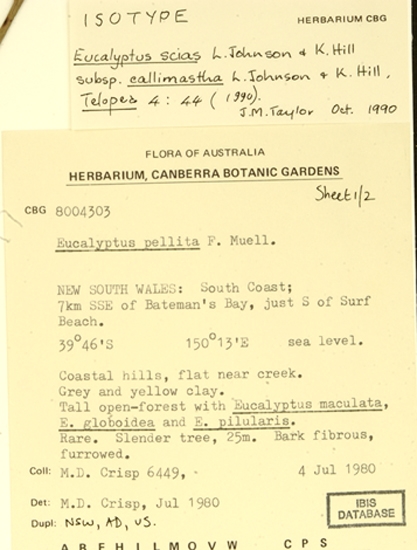Euclid - Online edition
Eucalyptus scias subsp. scias
Eucalyptus | Symphyomyrtus | Latoangulatae | Annulares
Bark rough throughout, fibrous, grey or brown, held in long strips or slabs with shallow furrows.
Juvenile growth (coppice or field seedlings to 50 cm): stem rounded or square in cross-section; juvenile leaves always petiolate, opposite for 3 to 6 nodes then alternate, broadly lanceolate, 6–10 cm long, 2–4.5 cm wide, base usually tapering to petiole, discolorous, dull, green.
Adult leaves alternate, petiolate, petiole 1.5–2.7 cm long; blade broadly lanceolate to lanceolate to falcate, 7–20 cm long, 2–6 cm wide, base usually tapering to petiole, discolorous, glossy, green, strongly penniveined, densely to very densely reticulate, intramarginal vein parallel to and just within margin, oil glands mostly intersectional.
Inflorescence axillary unbranched, peduncles 0.5–2.3 cm long, buds 3 or 7, pedicellate or sometimes sessile (pedicels 0–0.8 cm long). Mature buds ovoid to fusiform to diamond-shaped (1.1–1.9 cm long, 0.7–1.3 cm wide), green to brown, smooth or warty, sometimes with longitudinal ribs, scar present, operculum conical or slightly beaked, stamens inflexed, anthers cuboid or cuneate, versatile, dorsifixed, dehiscing by longitudinal slits (non-confluent), style long, stigma tapered, locules 3 to 6 each with 6 or 8 vertical ovule rows. Flowers white.
Fruit pedicellate to sometimes sessile (0–0.7 cm long), cup-shaped to obconical or campanulate, 0.6–1 cm long, 1–1.8 cm wide, 2-ribbed longitudinally, with prominent vertical, broad, inner operculum scar, disc raised-convex to annular or level, valves 3–6, strongly exserted.
Seeds brown, 1.5–2 mm long, cuboid to pyramidal, dorsal surface pitted, hilum terminal.
Cultivated seedlings (measured at ca node 10): cotyledons bilobed; stems square in cross-section and often winged also; leaves always petiolate, opposite for 4 to 6 nodes then alternate, ovate-lanceolate, 7.5–15 cm long, 2.5–5.5 cm wide, base rounded to tapering, margin entire, apex pointed, discolorous, dull, dark green above, paler beneath.
Flowering has been recorded in January and February.
Eucalyptus scias is a species of small straggly to medium-sized forest tree, endemic to eastern New South Wales. It is characterised by its thick, rough bark and discolorous adult leaves with wide-angled side-veins, buds with the base of the operculum normally wider than the hypanthium, and squat fruit with prominently exserted valves. These features easily distinguish it from others within its range.
Eucalyptus scias belongs in Eucalyptus subgenus Symphyomyrtus section Latoangulatae because cotyledons are bilobed, leaves are discolorous and have side-veins at a wide angle to the midrib, buds have two opercula and fruit have exserted valves. Within this section, E. scias is one of seven species forming series Annulares (the red mahoganies), as it has ovules in six or eight rows, seeds cuboid to pyramidal and bark rough over the trunk. The other six species are E. pellita from coastal north Queensland and New Guinea, E. urophylla from Timor and other islands to the north-west of Australia, E. notabilis scattered in coastal and subcoastal New South Wales and south-eastern Queensland, E. resinifera (with two subspecies) and E. robusta both widespread in coastal New South Wales and Queensland, and E. botryoides from coastal eastern Victoria and southern New South Wales. Of these, E. scias is very closely related to E. pellita, E. urophylla and E. notabilis. All four have relatively short fat buds where the operculum is usually wider at the base than the hypanthium. It differs only marginally from E. pellita and E. urophylla by having slightly smaller adult leaves and slightly shorter umbel peduncles. On the other end of the spectrum is E. notabilis, which is also very close to E. scias. E. scias differs only marginally by having larger buds and fruit. E. resinifera differs by having relatively long narrow buds with an acute operculum, where the base is normally not wider than the hypanthium. E. robusta has cylindrical fruit in which the tips of the valves are usually joined across the orifice. (InE. scias fruit are cup-shaped to funnel-shaped.) E. botryoides has sessile to shortly pedicellate oblong buds and cylindrical to barrel-shaped fruit.
There are two subspecies recognized in EUCLID.
E. scias subsp. scias
A medium-sized tree occurring sporadically in coastal and subcoastal ranges, principally from Narooma north to Cessnock, that has robust buds in clusters of seven. As treated here subsp. scias includes the more southerly subsp. callimastha which tends to have smaller buds often lacking a beak or apiculum on the operculum, and smaller fruit with a maximum of four valves, but the differences are slight.
E. scias subsp. apoda
Usually a poorly-formed tree with buds mostly in threes. Subsp. apoda occurs east of Tenterfield at high elevations. A population further south at Werrikimbe National Park at high elevations has somewhat smaller buds and may represent yet another subspecies.

